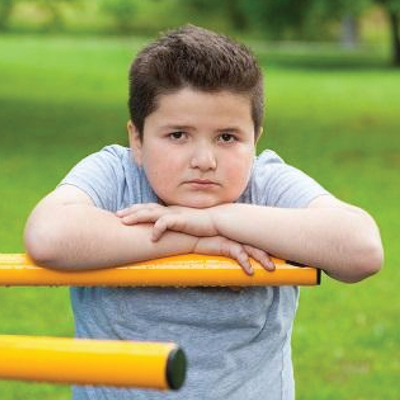Currently the U.S. childhood obesity rate is 18.5% among 2 – 19 year olds, with the rate of obesity increasing as age increases. Statistically one out of every six children of the more than 12 million children living in the U.S. are obese. Furthermore, research shows that those who are overweight or obese as children are more likely to be overweight or obese as adults. Similar to obese adults, obese children are at a greater risk of developing myriad of obesity-related health issues:
- High blood cholesterol levels and high blood pressure, factors playing into cardiovascular disease
- Type-II Diabetes
- Asthma
- Sleep Apnea
- Orthopedic issues
- Depression
While the etiology of obesity is complex there are countless factors that play into someone’s risk of weight gain that leads to obesity. Some basic influences and predictors of obesity are physical activity, socioeconomic factors, consumption of empty liquid calories (i.e. sugary beverages), family modeling and even excessive screen time. Current available data shows that:
- 91% of American children have poor diets
- Less than ½ of American children achieve the 60 minutes of recommended physical activity
- Nearly 25% of American high school aged children watch 3 or more hours of television
- Many schools have reduced gym time in favor of academics, especially in middle and high school aged children
- Nearly 2/3 of the American youth report consume a sugary beverage on any given day
Citations
- https://www.cdc.gov/healthyschools/obeisty/facts.htm
- https://stateofobesity.org/childhood-obesity-trends
- Steinberger J, Daniels SR, Hagberg N. Cardiovascular health promotion in children: challenges and opportunities for 2020 and beyond: a scientific statement from the American Heart Association. Circulation. 2016;134(12):e1-e20.
- Rosinger A, Herrick K, Gahche J, Park S. Sugar-sweetened beverage consumption among U.S. youth, 2011-2014. NCHS data brief, no 271. Hyattsville, MD: National Center for Health Statistics. 2017.
- Centers for Disease Control and Prevention. Trends in the prevalence of physical activity and sedentary behaviors national YRBS: 1991—2015. https://www.cdc.gov/ healthyyouth/data/yrbs/pdf/trends/2015_us_physical_trend_yrbs.pdf. Accessed June 11, 2018.
- American Academy of Pediatrics. The crucial role of recess in school. Pediatrics. 2013; 131:183-188.

